Nothing Ear (2)
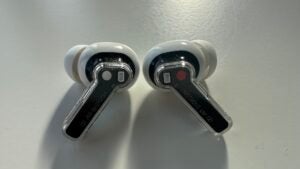
Nothing ups the features and functionality count, improves battery life and retains its mildly individual aesthetic to produce something quite special.
Pros
- Rapid, detailed and organised sound
- Good control options
- Hi-res audio certification
Cons
- Treble sounds can get quite lively
- Noise-cancelling isn’t all that special
- Plenty of competition
Availability
- UKRRP: £129
- USARRP: $149
- EuropeRRP: €149
- CanadaRRP: CA$199
- AustraliaRRP: AU$219
Key Features
- BluetoothBluetooth 5.3 with LHDC 5.0 compatibility
- Battery36 hours battery life
- Sound11.6mm full-range dynamic drivers
- Noise-cancellationAdaptive noise-cancellation
Introduction
It’s been less than two years since Nothing launched its Ear (1) true wireless in-ear headphones, but their replacement has arrived. That they’re called Ear (2) is reasonably predictable, as is an increase in the asking price.
Nothing reckons it’s added plenty of value to the Ear proposition, though – is it on to something?
The Nothing Ear (2) true wireless in-ear headphones are on sale in the United Kingdom for £129 per pair. In the United States they’ll set you back $149 – and at today’s exchange rate they’re likely to cost in the region of AU$239 or so.
The world, it basically goes without saying, is far from short of true wireless in-ear headphones that sell for this sort of money. Nothing will need to have something special up its sleeve if the Ear (2) are going to stand out from the crowd in any way other than visually.
Design
- Maximum battery life of 36 hours
- Wireless and reverse charging
- Light, compact form factor
- IP54 and IP55 rating for buds and case
It’s not easy to make a pair of true wireless in-ear headphones look in any way individualistic, so it’s important to give Nothing credit where it’s due. The Nothing Ear (2) may look very similar indeed to the product they replace, but they remain distinct from every other pair of ‘dangly stem’-style true wireless earbuds.

The company’s ongoing preoccupation with exposing as much of the innards of its products as possible via the use of as much clear plastic as it can get away with makes for a distinct aesthetic.
At 29 x 22 x 24mm (HxWxD) and 4.5g each, the earbuds themselves are compact and lightweight. And the charging case in which they travel (which is mostly clear, naturally) is an equally compact 56 x 56 x 22mm (HxWxD) and an equally lightweight 52g.

There are three sizes of eartip provided, as well as a short USB-C cable. The charging case can also sit on any Qi-certified wireless charging pad, and owners of the Nothing Phone (1) or other compatible devices can reverse-charge the case simply by placing it on the rear of their phone.
And thanks to an IP54 rating for the earbuds and IP55 for the charging case, the Ear (2) are happy enough in any realistic environment
Features
- Voice, app and pinch control
- Clear call quality
- Bluetooth 5.3 with LHDC 5.0 compatibility
Personalisation is a big part of Nothing’s pitch with the Ear (2). Download the Nothing X control app (free for iOS and Android) and it’s your gateway to a pretty bespoke experience.
For example, the app is home to an extensive listening test courtesy of the experts at Mimi. Before running the hearing test, the app will direct you through an eartip fit test, just to establish you’ve achieved the optimum fit. Then let the app know how old you are, and let it play a series of beeps (buried behind some pink noise) to each ear in turn.
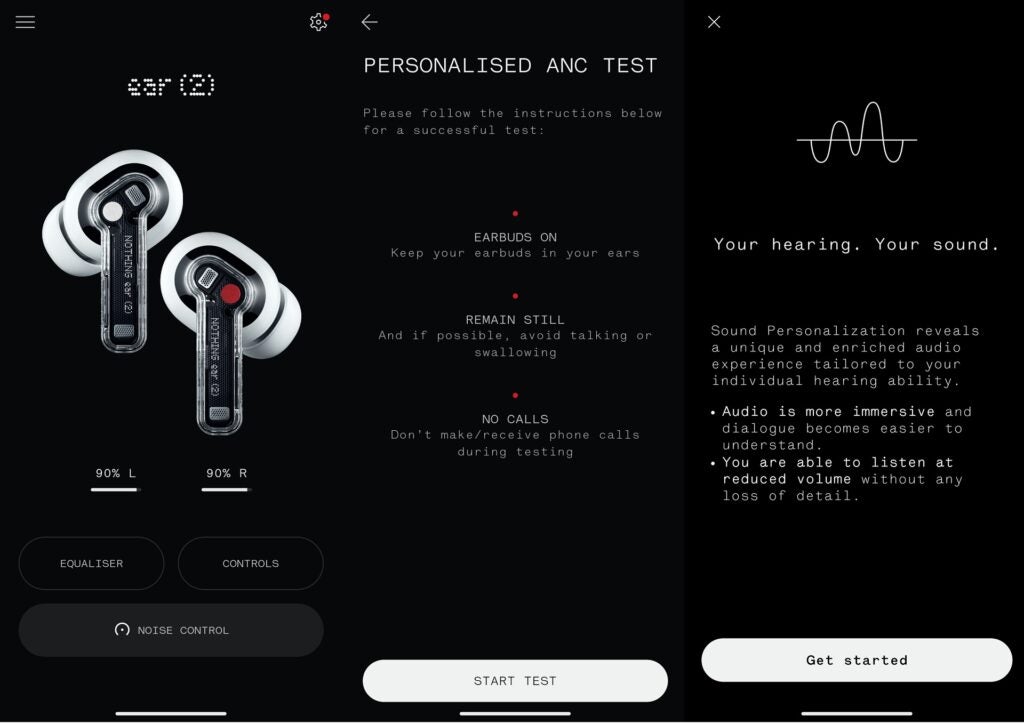
After a few minutes, analysis of the results will allow the Ear (2) to adjust EQ settings to best suit your audio sensitivities. And it will finesse the EQ in real time, depending on the content you’re listening to. The app even provides a little graphic representation of your hearing profile.
There’s an equivalent test available to adjust the level and intensity of the earbuds’ active noise-cancellation. Again, you’ll need to take the eartip fit test – and after that, the personalised ANC test uses seven audio filters to detect sound loss and adjust ANC to deliver (in theory, at least) the most comfortable listening experience possible.
The Nothing X app is also useful for creating your own EQs (in case you’re mistrustful of Nothing’s hearing test), switching ANC on (with degrees of intensity available, including an adaptive setting), off or to transparency and checking on battery life status.
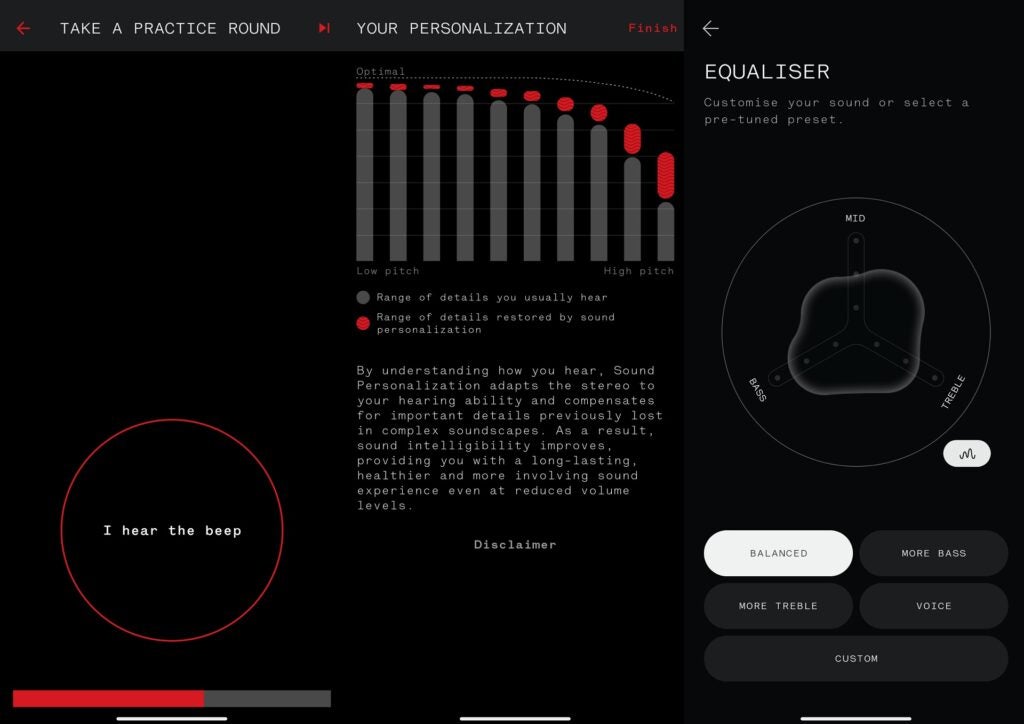
It’s where you can switch in-ear detection on or off, depending on whether or not you want playback to pause when you remove one or both of the earbuds. It’s where you can toggle Low Lag Mode on or off, and switch high-quality audio (which basically means the LHDC codec) on or off. There’s a Find my Earbuds’ feature, and the ability to connect the Ear (2) to two devices at once. Actual playback controls are absent, but the app does give the opportunity to customise the pinch control on each earbud.
Yes, it’s pinch rather than touch. The advantages to having a surface towards the bottom of each earbud’s stem that requires an overt press to operate it are obvious (they’re mostly to do with reducing unintentional instructions), as are the disadvantages (which relate to the effect such a positive action can have on the fit of the earbud). It’s possible to control play/pause, skip forwards/backwards, answer/end/decline call, summon the voice assistant and scroll through your noise-cancellation options.
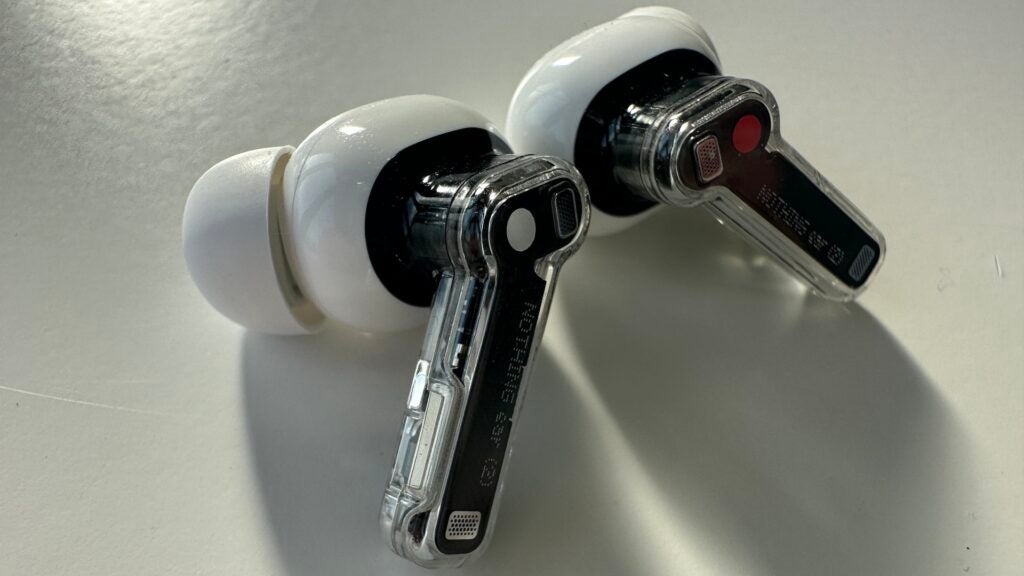
Nothing has specified Clear Voice Technology for the Ear (2) – there are three mics per earbud, positioned high up on the stem and charged with taking care of call quality, voice-assistant interaction and active noise-cancellation. They’re very well implemented, and call quality is good at either end of a conversation.
Voice-assistant exchanges are reliable too – which is just as well, if for no other reason than this is your only facility for adjusting volume (unless you’re prepared to fish your source player out of your pocket or bag, of course).
The Ear (2) use Bluetooth 5.3 for wireless connectivity, with SBC, AAC and LHDC 5.0 codec compatibility. Thanks to LHDC 5.0, the Ear (2) are High Res Audio Wireless certified and can, when linked to an appropriately talented device, accept 24-bit/192kHz streams.
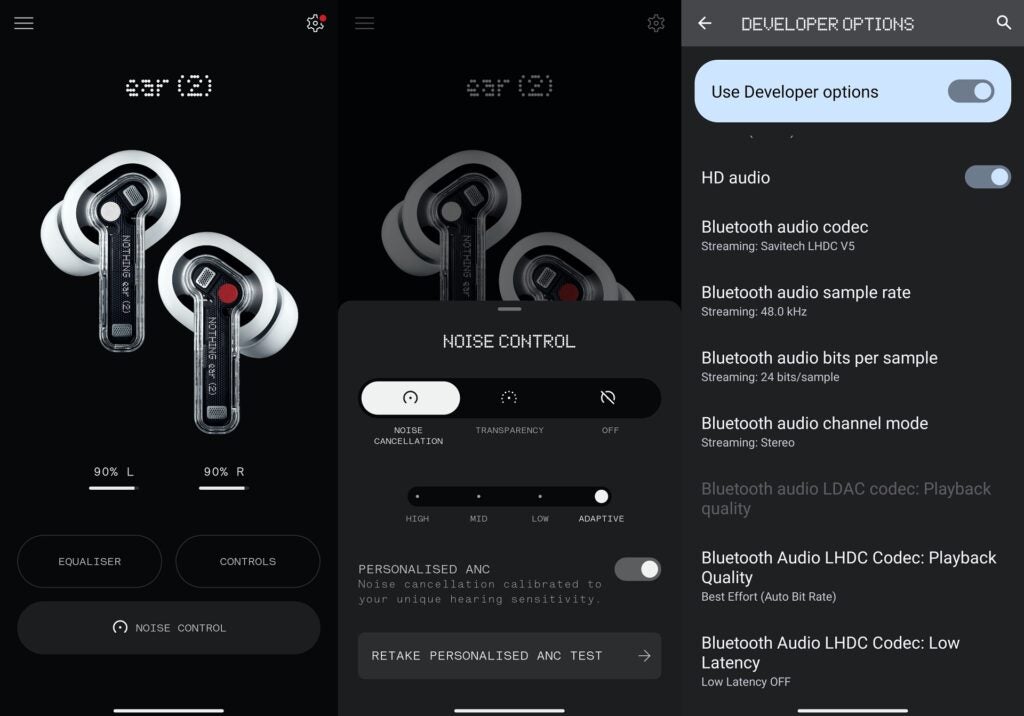
No matter the type of standard of digital audio file they receive, though, it’s delivered to your ears by a couple of 11.6mm polyurethane/graphene full-range dynamic drivers that are carried over unchanged from the original Ear (1) model, each sits in a dual-chamber design, intended to smooth air-flow.
The Nothing buds do quite decent work where noise-cancellation is concerned. No, they can’t eliminate external sounds entirely – but they reduce them significantly, and don’t introduce any suggestion of counter-signal while they do so. Taken as a package, in fact, the Ear (2) represent a more significant step on from the Ear (1) than the price increase might suggest.
Battery life is a better-than-before four hours (with ANC on) to six hours plus (with ANC off) from the earbuds, while the charging case holds another four full charges. An all-in, best-case scenario of 36 hours of battery life is certainly competitive – and a ten-minute pit-stop should be good for another eight hours or so of action.
Sound Quality
- Pacy, confident and detailed sound
- Organised and properly controlled
- Treble is as lively as it dares to be
Connected to a Nothing Phone (1) and with music streaming from the TIDAL app using LHDC 5.0, the Ear (2) are an uncomplicatedly enjoyable listen. It goes without saying that they’re not perfect – which true wireless earbuds are? – but there seems little doubt they’ll be perfect for some users. Especially when you keep the asking price uppermost in your mind.
With an MQA-powered TIDAL Masters file of Gang of Four’s Damaged Goodsplaying, the Nothing are a sprightly, front-foot listen. Low frequencies are nicely controlled where attack and decay are concerned, have decent depth even if they don’t delve as deep as some price-comparable alternatives, and carry plenty of detail where texture and timbre are concerned. The discipline bass sounds exhibit allow the choppy rhythm full expression, and there’s plenty of momentum to the overall presentation too.
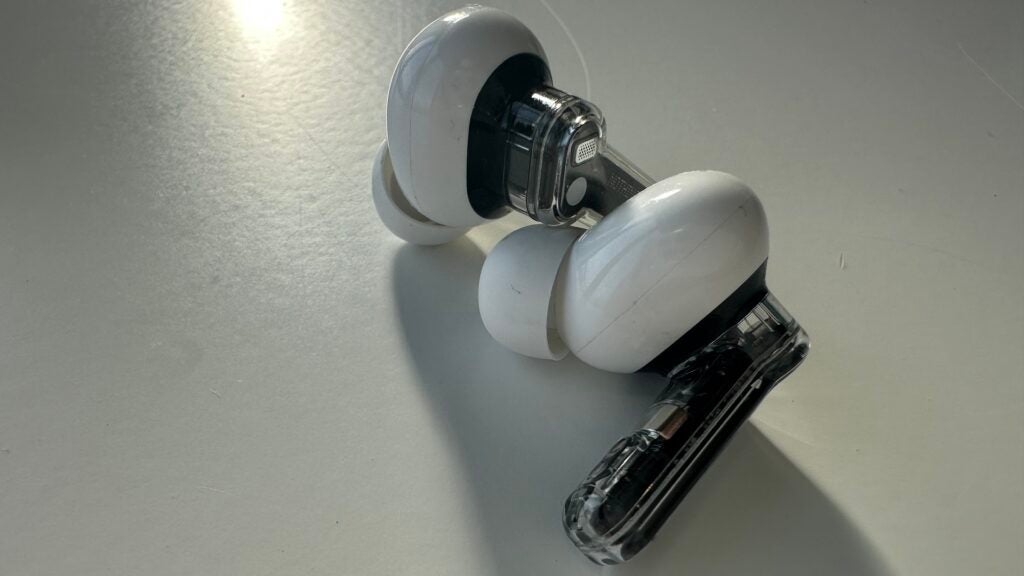
In the midrange, the acerbic nature of the vocal is described in full – and, again, there’s more than enough detail retained and delivered to make the singer’s attitude and emotional state absolutely plain. The Ear (2) don’t create the most expansive soundstage I’ve ever heard, but it’s very well organised – and so there’s enough space for a vocalist to express themselves without having to fight off competing information at every turn.
At the same time, though, midrange information is integrated convincingly into the rest of the frequency information – so the Nothing present recordings as a singular, unified whole rather than as a collection of individual occurrences.

At the top end there’s absolutely as much bite and crunch as is acceptable. Again, there’s no shortage of detail here, and treble sounds have plenty of substance to go along with the shine… but there’s a hint of hardness, a sort of latent threat, that becomes overt as you wind the volume levels upwards. Edgy is seldom a positive word where the top of the frequency range is concerned, yet if you like to listen loud then it’s going to come to mind sooner rather than later.
There’s a very agreeable amount of dynamic potency on display, both where the broad quiet-becoming-loud stuff and the more subtle dynamic variations in harmonics are concerned. And apart from the rather feral nature of the treble response, the Ear (2) aren’t perturbed by big volumes, either.
Latest deals
Should you buy it?
Your source player is compatible with the LHDC Bluetooth codec: It’s a superior form of wireless transmission and it helps the Ear (2) sound great.
You’re sensitive to high-frequency sounds: It’s not quite at ‘migraine’ levels, but the Nothing’s top-end response is as confident as it dares to be.
Final Thoughts
Nothing’s promise to disrupt the market has come to naught – after all, what’s disruptive about launching a smartphone and some earbuds, and opening a bricks-and-mortar store in London’s Soho?
But there’s no denying that as a me too! product, the Ear (2) is pretty impressive – there are much worse ways to spend this sort of money on some true wireless earbuds.
How we test
We test every headphones we review thoroughly over an extended period of time. We use industry standard tests to compare features properly. We’ll always tell you what we find. We never, ever, accept money to review a product.
Find out more about how we test in our ethics policy.
Tested for more than a week
Tested with real world use
FAQs
LHDC stands for Low Latency High Definition codec, and it is an audio codec that allows for streaming of high definition audio over a Bluetooth connection. It works in a similar way to Sony’s LDAC codec by increasing the amount of data that can be used to stream audio.
Full specs
The post Nothing Ear (2) appeared first on Trusted Reviews.
https://ift.tt/vRgX2Gp



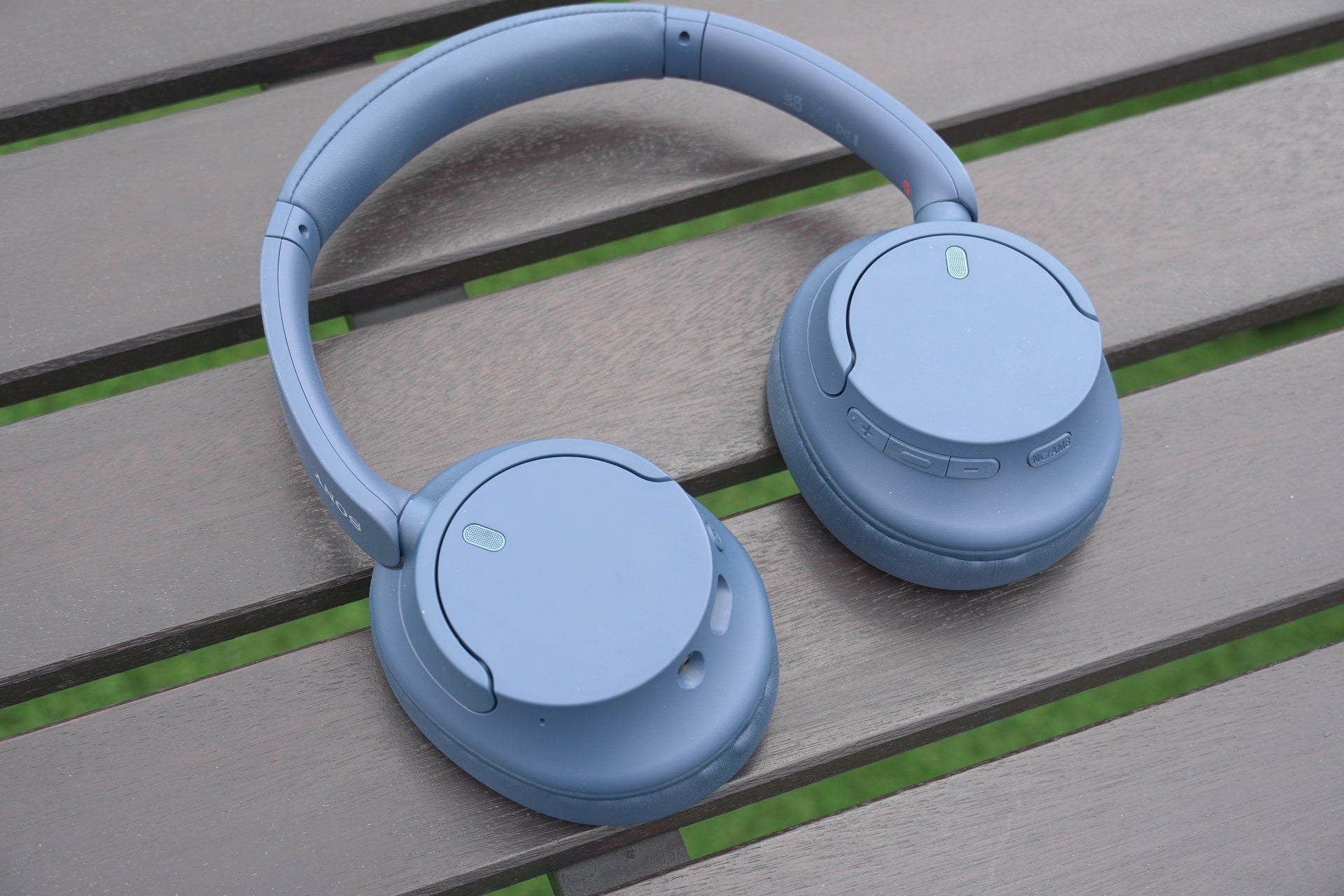


Comments
Post a Comment